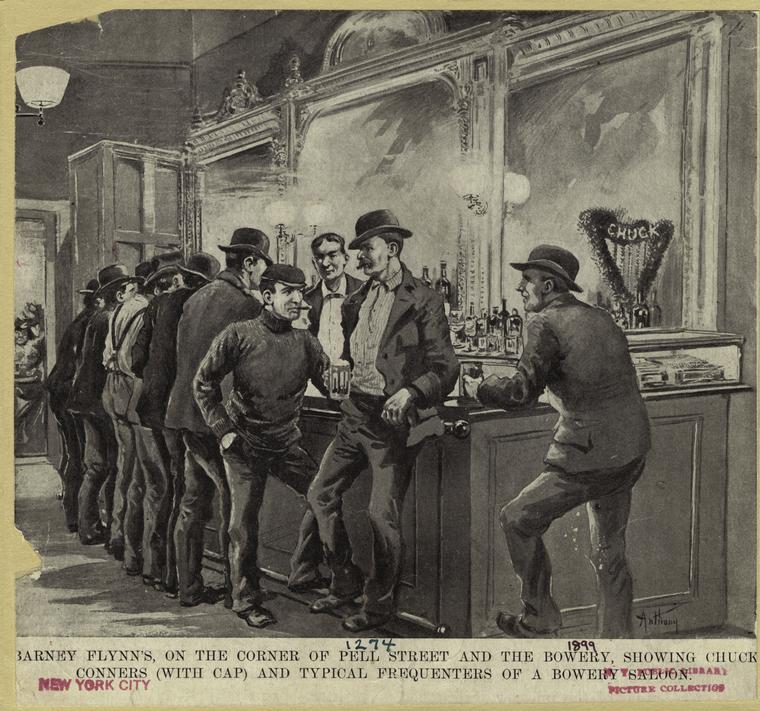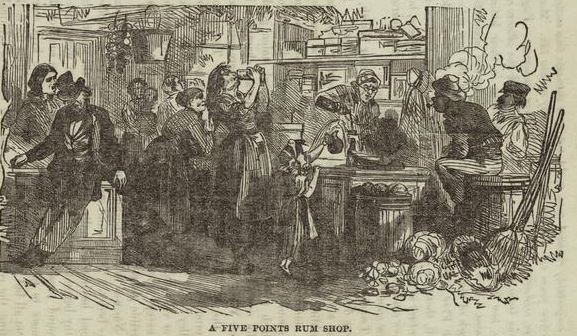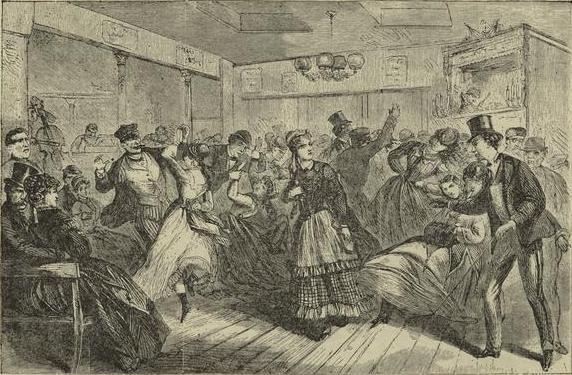Blog Archive
Kick Up Your Heels!
Many of my favorite nights out on the town have occurred on the Lower East Side; from getting happy hour drinks with colleagues at the Magician to dancing the night away at Home Sweet Home. Here at the Tenement Museum, we connect to the past to the present, and out of habit, I’m always curious about the parallels between my activities today and those of a bygone era.
For three years, I lived in a 300 square foot Lower East Side tenement apartment, and at times, it felt like the walls were moving in on me. Summertime with no air conditioner could be the most trying on one’s mental state, and the local bars and restaurant become a refuge and a place of community. This is not a new concept; while the state of my apartment in no way compared to the overcrowded, sordid conditions of tenements of the past, there are certainly some similarities to life on the Lower East Side.
An account from October 12, 1863 New York Tribune states, “The homes of the poor in the [Five] Points are not fit places in which to spend an evening pleasantly, for in most of them there are from four to a dozen individuals – the rooms are dirty and unventilated, consequently the inhabitants are forced into the streets to find either pleasure or comfort.” When a tenant got home from long hours at work, they often did not want to return to their cramped and seasonally uncomfortable apartment – so they went to the saloon.
In the 1800’s, dance halls, saloons, and grocery stores – where drinks were sold by the glass – were scattered throughout the Lower East Side in great numbers. Residents of the Lower East Side flocked to these venues to drink, socialize, and distract themselves from the reality of everyday life. In 1851, there were roughly a dozen saloons and groceries per block in the Five Points.
When Charles Dickens toured New York in 1841, he was unimpressed by the City until he visited the Almack dance hall in the Five Points neighborhood. A dance hall run by African Americans, Dickens was enthralled by black American culture and dancing. These establishments shocked many uptown visitors because of the mixing of blacks and whites on the dance floor.
Dancers of different ethnicities sported their own cultural dance styles. Dance contests were organized where African Americans would dance against Irish immigrants, each featuring their own traditional steps. There were friendly rivalries between the native-born whites, Irish immigrants, and African American dancers. Often times, these dancers would incorporate elements of their competitors’ dance styles into their own. In fact, the development of “tap dancing” occurred because of the collaboration between the African American shuffle and the Irish jig.
With these new nuggets of information, I will be sure to look more carefully for the newest cultural developments within the raucous and vibrant nightlife of the 21st century Lower East Side.
– Posted by Alana Rosen



